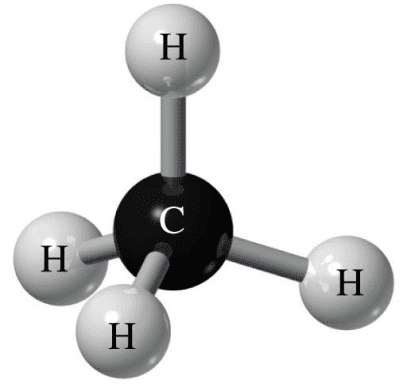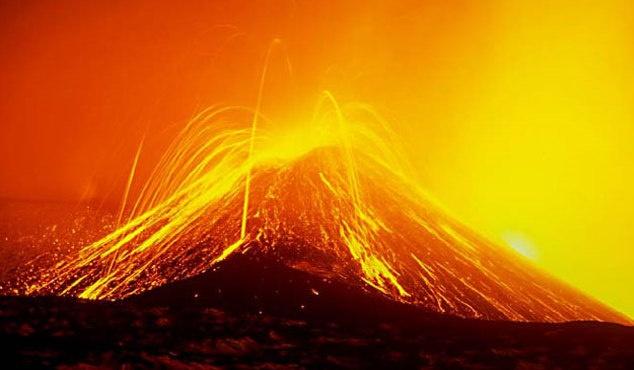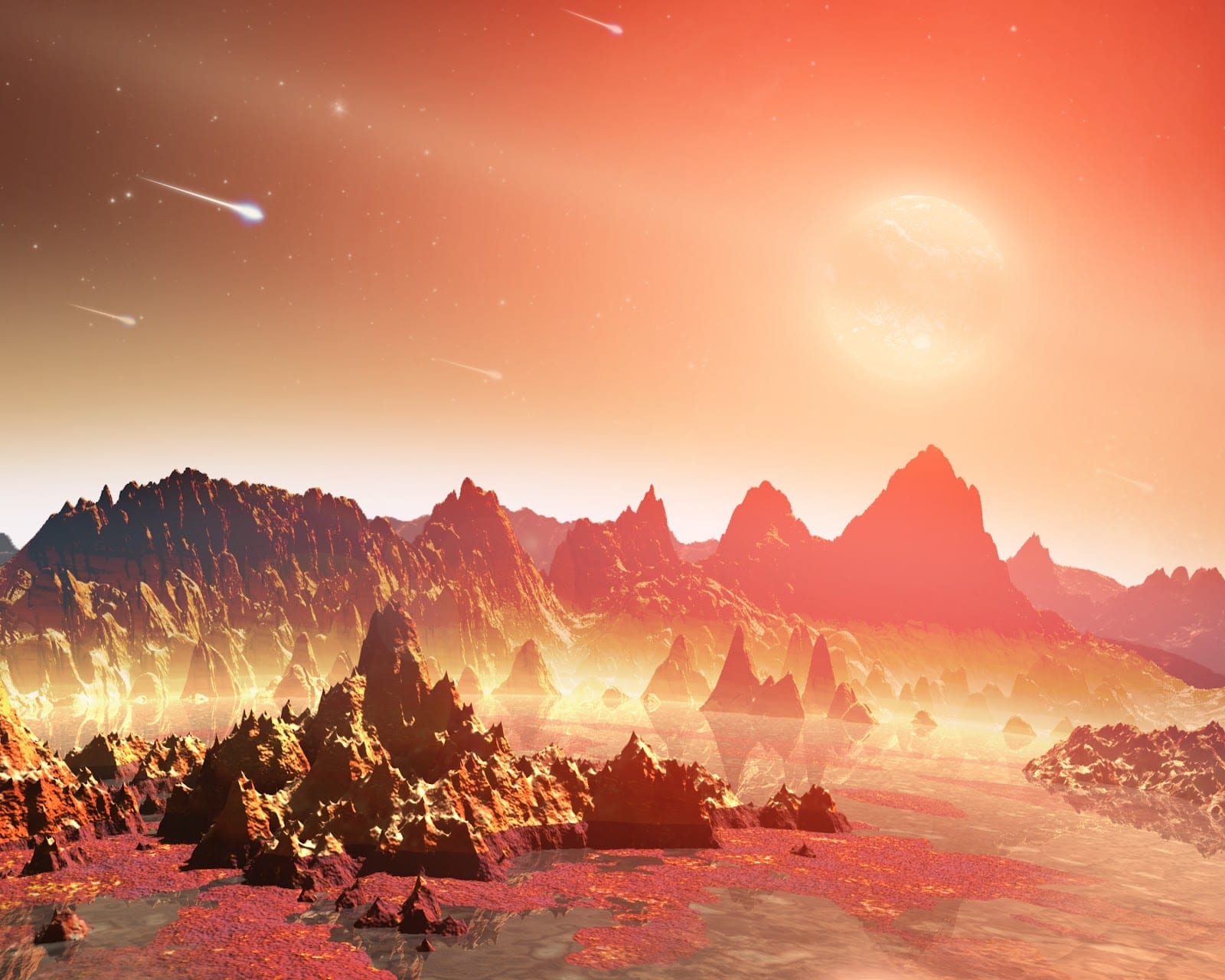
It has always been said that climate change it is something relatively modern caused, mostly, by large emissions of greenhouse gases into the atmosphere, such as methane and CO2, by humans since the industrial revolution. However, what would you think if I told you that over the billions of years since the Earth formed there have been other climate changes?
The Earth's atmosphere has not always been the same as it is today. It has been through many types of compositions. What is the prehistory of climate change?
When methane regulated the weather
About 2.300 billion years ago, strange microorganisms breathed new life into the then "young" planet Earth. It's about cyanobacteria. They filled the planet with air. However, it is believed that long before this time, another group of unicellular organisms populated the planet and could have made it habitable. We talk about methanogens.
Methanogens are single-celled organisms that can only survive under conditions where there is no oxygen and they synthesize methane during their metabolism as a waste product. Today we can only find methanogens in places like the intestines of ruminants, the bottom of sediments and other places on the planet where oxygen does not exist.

Methane molecule
As we know, methane is a greenhouse gas that retains 23 times more heat than carbon dioxide, so it is hypothesized that for the first two billion years of planet Earth, methanogens ruled. The methane synthesized by these organisms caused a greenhouse effect with enormous repercussions on the climate of the entire planet.
Today, methane only persists in the atmosphere for about 10 years, due to the presence of oxygen. However, if the Earth's atmosphere lacked oxygen molecules, methane could persist for about 10.000 years. At that time, the sunlight was not as strong as it is now, so the amount of radiation reaching the Earth's surface and, therefore, warming the planet, was much less. That is why, to increase the temperature of the planet and create a habitable environment, methane was needed to trap heat.
Greenhouse effect of a primitive atmosphere
When the Earth formed about 4.600 billion years ago, the Sun gave off a luminosity equivalent to 70% of what it does today. That is why, before the first ice age (about 2.300 billion years ago) the atmosphere was entirely dependent on the greenhouse effect.
Climate change specialists thought in ammonia as the greenhouse gas that retained heat in the primitive atmosphere, since this is a powerful greenhouse gas. However, in the absence of atmospheric oxygen, ultraviolet radiation from the Sun rapidly destroys ammonia, making methane the predominant gas at the time.
To the contribution of heat in the atmosphere and the greenhouse effect we also add CO2. By then, his concentration was much lower, that is why it could not be the cause of the greenhouse effect. CO2 was only emitted into the atmosphere naturally, through volcanoes.

Volcanoes gave off CO2 and hydrogen
The role of methane and the fog that cooled the planet
Methane's role in regulating the early climate began about 3.500 billion years ago, when methanogens synthesized methane gas in the oceans as a waste product. This gas trapped heat from the Sun in a wide region of the electromagnetic spectrum. It also allowed the passage of ultraviolet radiation, so among these factors added with the existing CO2, they kept the planet at a habitable temperature.
Methanogens survived better at higher temperatures. As temperatures intensified, so did the water cycle and rock erosion was enhanced. This process of erosion of the rocks, extracts CO2 from the atmosphere. So much the concentration of methane and CO2 in the atmosphere became equal.

The chemistry of the atmosphere caused the methane molecules to polymerize (form chains of methane molecules linked together) and form complex hydrocarbons. These hydrocarbons condensed into particles that, at high altitude, they formed an orange mist. This cloud of organic dust compensated for the greenhouse effect by absorbing visible light from incident solar radiation and emitting it back into space. In this way, it reduced the amount of heat reaching the planet's surface and contributed to the cooling of the climate and to slow down the production of methane.
Thermophilic methanogens
Thermophilic methanogens are those that survive in fairly high temperature ranges. For this reason, when the hydrocarbon mist was formed, as global temperatures cooled and decreased, the thermophilic methanogens could not survive such conditions. With a colder climate and a detrimental thermophilic methanogen population, conditions on the planet changed.
The atmosphere could only have kept methane concentrations so high if methane would have been generated at speeds comparable to current. However, methanogens did not generate as much methane as humans in our industrial activities.

Thermophilic methanogens
Methanogens basically feed on hydrogen and CO2, generating methane as a waste product. Some others consume acetate and various other compounds from the anaerobic degradation of organic matter. That is why, today, methanogens They only thrive in the stomachs of ruminants, the silt that underlies flooded rice fields and other anoxic environments. But since the primitive atmosphere lacked oxygen, all the hydrogen emitted by volcanoes was stored in the oceans and was used by methanogens, since it did not have oxygen at its disposal to form water.
Fog of "anti greenhouse" effect
Due to this positive feedback cycle (higher temperature, more methanogens, more methane, more heat, more temperature…) the planet became such a hot greenhouse that only thermophilic microorganisms managed to adapt to this new environment. However, as I mentioned before, a mist was formed from hydrocarbons that carried away the incident ultraviolet radiation making the weather cool. In this way, methane production was halted and temperatures and atmospheric composition would begin to stabilize.

If we compare the mists with that of Titan, the largest satellite of Saturn, we see that it also has the same characteristic orange color corresponding to the dense layer of hydrocarbon particles, which is formed when methane reacts with sunlight. However, that layer of hydrocarbons makes Titan's surface at -179 degrees Celsius. This atmosphere is colder than planet Earth has been in its entire history.
If Earth's hydrocarbon cloud had reached the density that Titan's has, it would have deflected enough sunlight to counteract methane's powerful greenhouse effect. The entire surface of the planet would have frozen, thus destroying all methanogens. The difference between Titan and Earth is that this moon of Saturn has neither CO2 nor water, so methane evaporates easily.

Titan, the largest satellite of Saturn
The end of the methane era
The fog that formed from the methane did not last forever. There have been three glaciations since the Proterozoic, and methane can explain why they occurred.
The first glaciation is called the Huronian glaciation and under the oldest rocks found under its glacial deposits there are detritus of uraninite and pyrite, two minerals that indicate a very low level of atmospheric oxygen. However, above the glacial layers, a reddish sandstone is observed that contains hematite, a mineral that is formed in oxygen-rich environments. All this indicates that the Huronian glaciation took place precisely when atmospheric oxygen levels first began to skyrocket.
In this new environment increasingly rich in oxygen, methanogens and other anaerobic organisms that once dominated the planet, gradually disappeared or were seen increasingly confined to more restricted habitats. In fact, the methane concentration would have remained the same or higher than it is today, if the oxygen levels had been kept lower.

This explains why on Earth, during the Proterozoic, there were no glaciations for almost 1.500 billion years, even though the Sun was still quite weak. It has been speculated the possibility that a second rise in atmospheric oxygen, or in dissolved sulfate, would also have triggered glaciation episodes, by reducing the protective effect of methane.
As you can see, the Earth's atmosphere has not always been as it is today. It happened to be devoid of oxygen (a molecule that we need today to live) and where methane regulated the climate and dominated the planet. Furthermore, after the glaciations, the oxygen concentration has increased until it becomes stable and equal to the current one, while the methane has been reduced to more restricted places. Currently, the concentration of methane is increasing due to emissions from human activities and contributes to the greenhouse effect and current climate change.